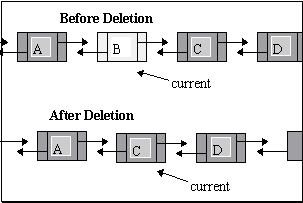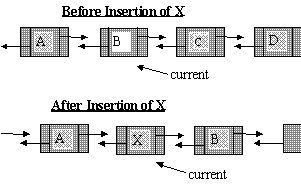CSAS1112 - Practice Exam 2
![]()
This practice exams lists some sample questions, covering the topics that will be covered
in the actual exam. The actual exam may or may not contain questions similar to this
practice exam, but the format of the actual exam will be very similar to this practice
one. However, this practice exam is somewhat longer than the actual exam.
There may be some more questions later. Please check back Monday before class, if
possible. If there are new questions, it will be indicated here.
![]()
1. Define the following terms: List, Stack, Queue, FIFO, LIFO. What operations are part of
a Stack ? What operations are part of a Queue ? What does the keywords new and delete do ?
What is a pointer ? What data type can a pointer point to ? How much memory does a
pointer, a double, an integer, and a char use in Turbo C++ for DOS ? What are the
simularities between an array and a list ? What are the differences between a array and a
list ?
![]()
2. Decide which of the following statements are true and which are false:

